Ever snapped your molar on a sneaky popcorn kernel while watching cricket? Or woken up with a tooth so sore you nearly choked on your Vegemite toast? Dental drama is real – and in Brisbane’s bustling life it can happen when you least expect it.
Tooth fractures (think cracks, splits or chips) might be silent little villains, but they’re actually the second-leading cause of adult tooth loss (after gum disease).
In this post, we’ll walk you through what cracks, chips or splits in your teeth really mean, why they happen, and how your friendly local Brisbane dentists will fix them – often before you even notice. (Yes, dentists are like tooth superheroes, just waiting with a drill and a smile.)
What Exactly Is a Tooth Fracture?
A “tooth fracture” is any break or crack in your tooth structure. It could be as minor as a tiny craze line in the enamel or as major as a tooth splitting in half. Imagine your tooth is like a perfectly poured ceramic mug – sometimes it just gets a little chip, or in a worst-case scenario, shatters entirely.
- Craze lines: These are hairline cracks in the outer enamel, often from years of wear. They’re superficial and usually painless, like surface scratches on a coffee cup. Your Brisbane dentist might spot these during a check-up but often won’t treat them.
- Fractured cusps (chips): This is when a piece of the chewing surface breaks off. It’s common in teeth with big fillings, or if you chomp down on hard lollies, nuts or ice. A fractured cusp might not hurt much – more a sharp edge you feel with your tongue – but it needs fixing. Your dentist might simply smooth it out and place a filling or crown over the broken part. (Pro tip: if you ever bite a penny or find a filling on your tongue, check with your dentist!)
- Cracked tooth (complete crown crack): Think of a crack running vertically from the top of the tooth toward the root. The tooth is still in one piece – but it’s cracked through the enamel and often into the inner dentine. These can hurt when biting or sipping hot/cold drinks. Often the nerve (pulp) is involved, so many cracked teeth need a root canal and crown to save them.
- Split tooth: Yikes – this is a crack going all the way through the tooth, essentially splitting it into two parts. Splits usually come from an old crack that was left too long, or a huge bite force. Sadly, split teeth can’t really be saved whole, so often the damaged portion is removed (sometimes just one “root side” of a molar) and replaced with a crown or implant.
- Vertical root fracture: The crack starts at the root and travels upward. Often there are no symptoms until infection sets in. Most vertical root fractures spell extraction, unless your dentist can salvage part of the tooth. They usually happen in teeth that already had a root canal.
Brisbane Smile experts confirm: “A broken tooth can show anywhere from a small crack to a split tooth,” affecting enamel, dentine or even the pulp. The key is early detection – hairline cracks won’t heal on their own, but if caught early, many problems can be fixed before a crisis hits.
What Causes Tooth Fractures in Brisbane (and Why You)?
You might think only spectacular accidents cause a cracked tooth, but the truth is everyday stuff can do it. Brisbane’s active lifestyle – beaches, sports, and even our diet – plays a part:
- Biting hard objects: Ever chomped on an ice cube, licked a salted peanut thinking it was a crumb, or crunched on hard lollies? These yummy bites can surprise your enamel. Even habitual chewing of pens, fingernails or ice can “bruise” a tooth and start a crack.
- Large fillings and weak teeth: If your tooth already had a giant filling or a root canal, it’s like a dam with cracks – under pressure it can break. Basically, a heavily filled tooth or one with big cavities is thinner and more fragile, so a sudden force can cause it to chip or crack.
- Grinding (bruxism): A lot of us grind our teeth (especially young professionals stressed in lockdowns – ahem!). Night-time clenching can put enough pressure to crack a tooth over time.
- Sports and accidents: A stray rugby tackle, an Aussie Rules footy, or face-plant into sand – accidents happen. A direct hit to the mouth can shatter teeth and leave you needing emergency care. Even simple falls (think riding a bike on a hot summer’s day) can send a tooth to the ground.
- Age and general wear: Over the years, teeth suffer. Enamel thins, tiny stress fractures accumulate. By age 50+ these hairline cracks are more common. It’s like antique china: delicate with time. But even a teen can crack a tooth – age isn’t a guarantee.
Warning signals (symptoms): You won’t always see the crack yourself, but pay attention to your mouth! Signs include:
- Sharp, sudden pain or discomfort when biting into something.
- Unusual sensitivity to hot, cold or sweet foods.
- Swelling or tenderness around a tooth.
- Feeling a “splintery” edge or rough spot with your tongue.
- Occasionally a toothache that comes and goes without an obvious cause.
Interestingly, many cracks don’t hurt at first. You might not know a tiny fracture is there until it suddenly becomes a big break (often on a long weekend!). So, even minor twinges or “off” sensations deserve a quick check at the dentist.
Types of Tooth Fractures: A Quick Guide
| Type | Description | Typical Treatment |
|---|---|---|
| Craze lines | Superficial hairline cracks in enamel. Often no pain. | No treatment needed usually. Monitored during check-ups. |
| Fractured cusp | A piece of the chewing surface chips off. Common around big fillings. | Smooth edges + filling or dental crown. If pulp exposed, maybe root canal. |
| Cracked tooth | Vertical crack from chewing surface toward root. Tooth still in one piece but pulp often involved. | Often requires root canal therapy + crown, or sometimes extraction if very deep. |
| Split tooth | Crack goes all the way through, splitting tooth in two. Usually cannot be saved intact. | Extraction of the damaged portion. If only one root is split (like in molars), part of tooth may be saved with crown or root canal. |
| Vertical root fracture | Crack starts at root, travels up. Hard to detect, often with minimal symptoms. | Typically extraction (unless super complex treatment to save part of root). |
| Chipped tooth (partial fracture) | A section of enamel/dentin is broken off (e.g. you bite down and a chunk chips off). | Dentist can often bond the chip with tooth-coloured resin or do a crown. Many Brisbane clinics offer same-day repairs. For details, see Chipped Tooth Repair. |
“For more information on oral health and dental care in Australia, you can also refer to the official Australian Government health resources.
Fixing Tooth Fractures: How Dentists Save Your Smile
So, your tooth’s cracked – now what? Don’t panic. Brisbane dentists see this all the time and have a toolbox full of fixes. The main goal: save the tooth if possible and stop pain/infection.
- Dental Bonding: For a small chip or cusp fracture, your dentist can apply a tooth-coloured resin to rebuild the missing part. It’s like epoxy putty for a cracked mug – it fills the crack/chip and blends in.
- Fillings and Crowns: If a fracture involves more of the tooth, a filling might do, but often a crown (cap) is needed. Crowns are strong ceramic or metal coverings that wrap around the tooth, stopping the crack from worsening.
- Root Canal Therapy: If the crack has reached the nerve (pulp), you’ll need a root canal. This means removing the damaged pulp, disinfecting the canals, then filling and crowning the tooth.
- Veneers: For front teeth with minor cracks/chips, a veneer (thin porcelain shell) can hide the damage.
- Extraction: If a tooth is hopelessly split or fractured into the root, removal might be necessary. In that case, dentists often talk implants or bridges.
Quick Steps to Take (Before You See the Dentist)
- Rinse gently with warm water.
- Apply cold compress.
- Save any fragments.
- Avoid hot/cold foods.
- Call your dentist ASAP.
Preventing Tooth Fractures: Tips from the Pros
- Don’t chew on hard stuff: Skip ice, hard nuts, popcorn kernels, and don’t use your teeth as tools.
- Wear a mouthguard: If you play sport, get a fitted mouthguard. Also, if you grind at night, talk to a dentist about a nightguard.
- Regular dental check-ups: Dentists can spot microscopic cracks before you do.
- Maintain good oral hygiene: Healthy teeth are stronger teeth. Brush/floss daily to keep enamel strong.
- Be mindful of acid foods: Acids can soften enamel over time, making teeth more crack-prone.
Conclusion
Dealing with a cracked, chipped or fractured tooth might sound scary, but with modern dentistry in Brisbane on your side, you’re not alone. By knowing the signs and acting fast, you can often save the day (and your tooth) with a quick fix – sometimes even during your lunch break.
Remember, prevention is key, but if life does damage, book that dental emergency appointment. Your Brisbane dentist has the know-how – from bonding to crowns – to repair the damage, relieve your pain, and restore your confident grin.
Keen to prevent tooth troubles or learn more? Call your local Brisbane dentist for advice. Stay safe, chew smart, and keep smiling, Brisbane!
Frequently Asked Questions
How do I know if I cracked a tooth or just bruised it?
A true crack/chip often causes immediate sharp pain or sensitivity. If you feel a sharp edge or sustained pain when chewing on one side, assume it’s cracked and see a dentist.
Can a cracked tooth heal by itself?
No – unlike skin, teeth don’t “heal” a crack. The crack can actually extend over time. The good news is that treatments (bonding, crowns, root canals) can save the tooth if caught early.
How much does fixing a cracked or chipped tooth cost?
It varies by treatment. A simple filling might be a few hundred dollars, while a crown or root canal can be more (often in the low thousands). Emergency consults in Brisbane (like at Brisbane Smiles) are ~$65 and then you get a custom quote. Check if your health fund covers it (many basic funds cover bonding/crowns partially).
Can I continue to use my tooth after a crack?
Best not to. Chewing on a cracked tooth can worsen the break or push bacteria into the crack. Until you see a dentist, stick to soft foods and chew on the opposite side. Early treatment is “the only way to reduce the chance that your cracked tooth doesn’t become a serious health issue.


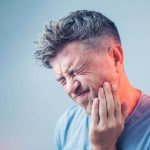
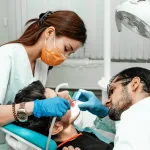

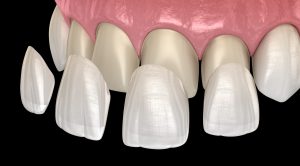
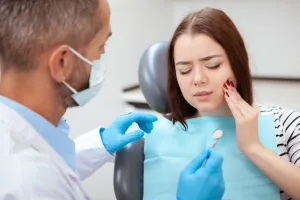
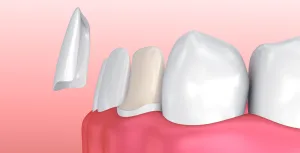

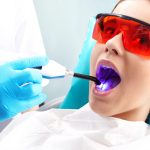
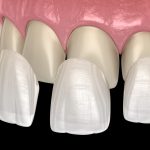
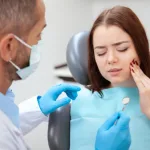
Add comment